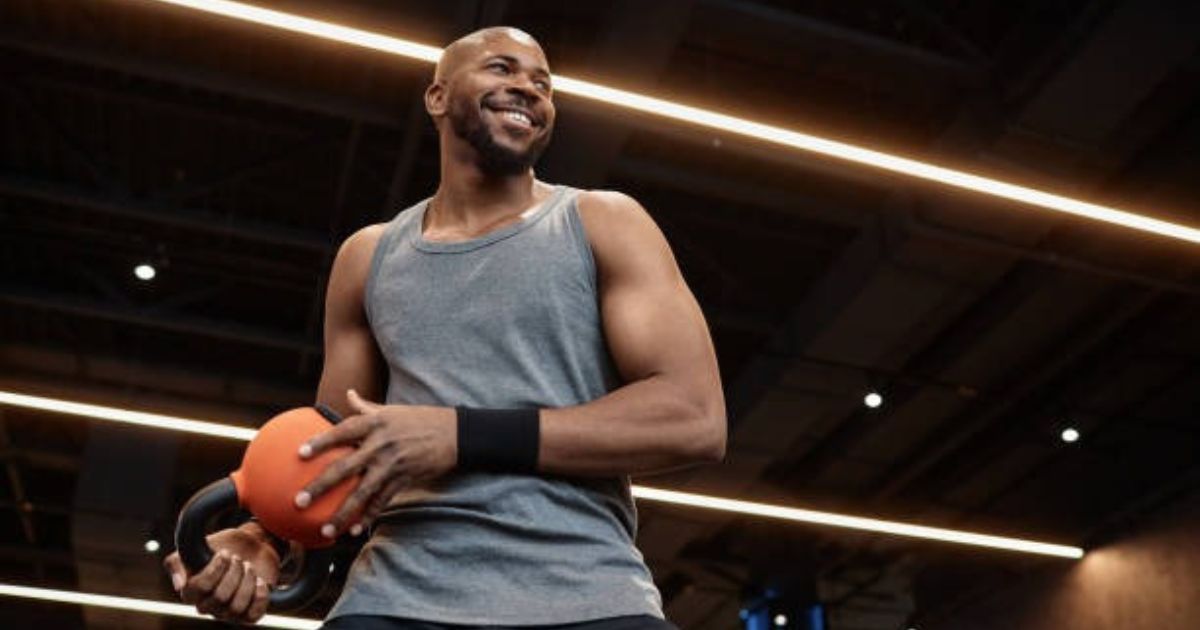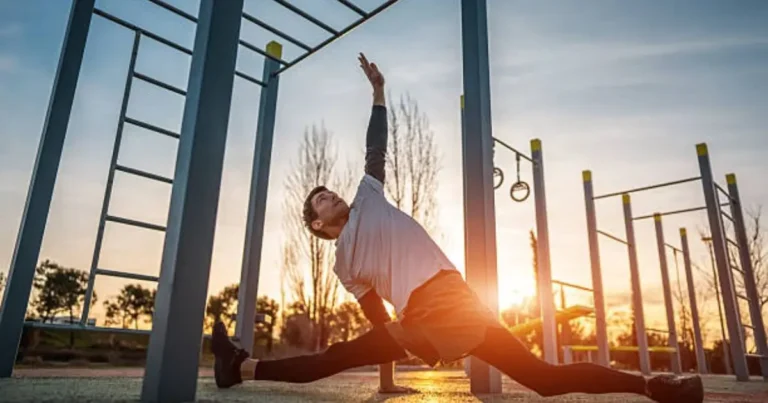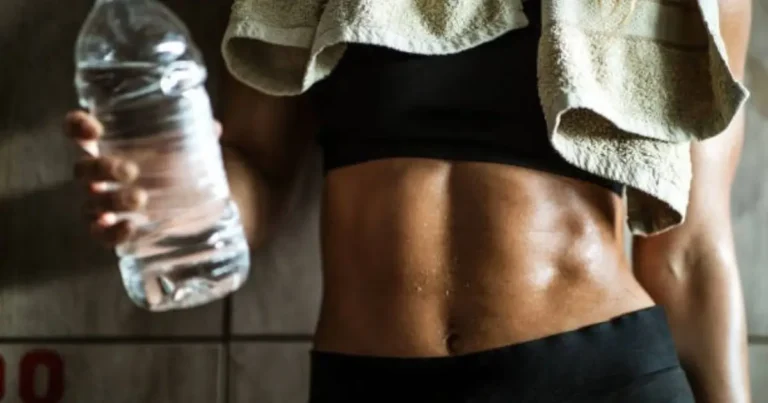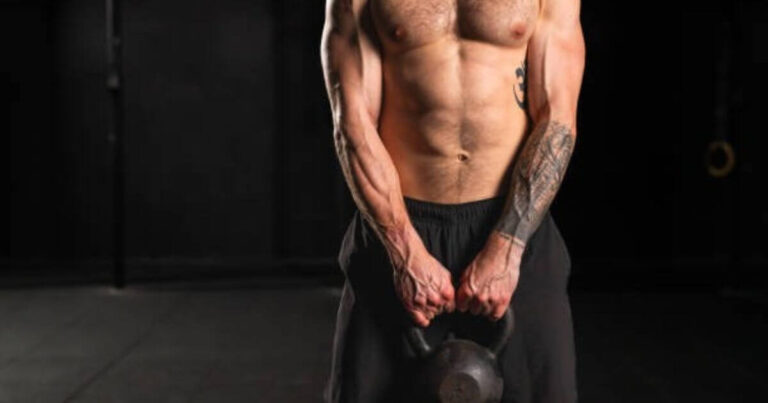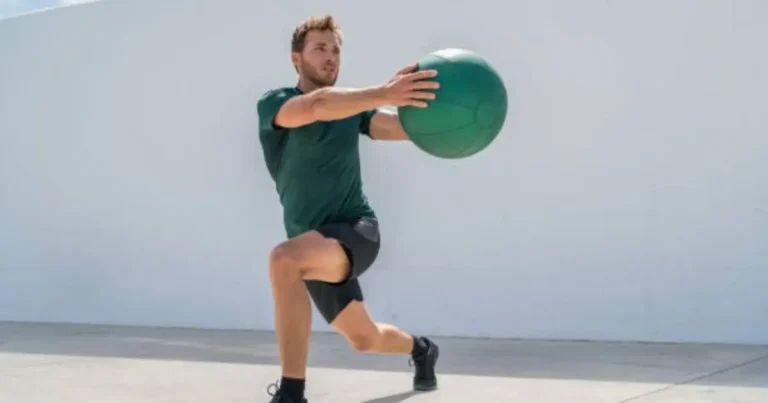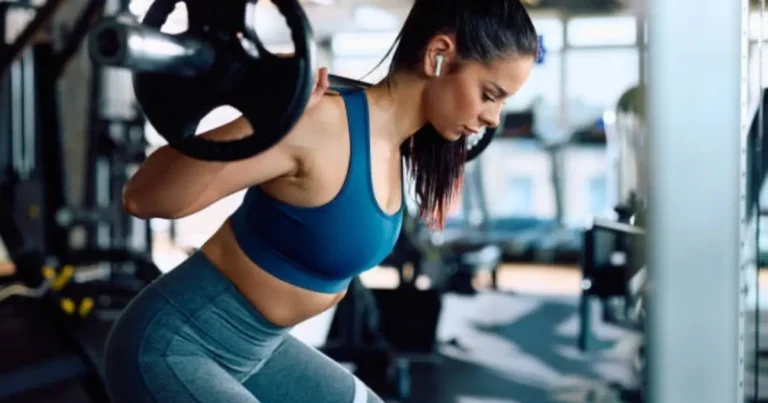The Ultimate Kettlebell Arm Workout: Build Strength & Definition
Want sculpted biceps and triceps without endless isolation sets? This kettlebell arm workout combines powerful compound lifts with targeted isolation moves to forge strong, defined arms—plus a kettlebell tricep workout that transcends basic dips.
While kettlebells are famed for total-body drills, they also shine when zeroing in on your arms. Between offset loads, unique grip challenges, and full-body tension demands, kettlebells activate muscles differently than dumbbells. In this guide, you’ll learn how to harness that nuance with:
- Compound foundations that build arm strength indirectly
- Isolation exercises designed to target biceps, triceps, and forearms
- Weight, grip & safety essentials unique to kettlebells
- Structured routines for beginners through advanced lifters
Table of Contents
How Kettlebell Compound Lifts Build Your Arms (Indirect Work is Key!)

Before diving into curls and extensions, understand that big, bang-for-your-buck moves recruit your arms heavily:
- Triceps: Drive presses (strict press, push press), floor presses, even the lockout of a Turkish get‑up demands triceps engagement.
- Biceps & Forearms: Rows, cleans, snatches, and swings all tax your grip and require bicep stabilization under load.
Rather than chasing isolation alone, anchoring your arm routine in these compound lifts ensures balanced strength, joint health, and time efficiency.
Kettlebell Arm Training Essentials: Weight, Grip & Safety
Choosing the Right Kettlebell Weight for Arm Exercises
Isolation moves should start lighter—control is king with kettlebells. Use this chart as a starting point:
| Exercise | Men (kg/lb) | Women (kg/lb) |
|---|---|---|
| KB Bicep Curls / Hammer Curls | 8–12 kg (18–26) | 4–8 kg (9–18) |
| KB Overhead Triceps Extensions | 12–16 kg (26–35) | 6–10 kg (13–22) |
| KB Floor Press / Tate Press | 12–16 kg (26–35) | 6–10 kg (13–22) |
| KB Skullcrusher | 8–12 kg (18–26) | 4–8 kg (9–18) |
Pro tip: If form breaks, drop 2–4 kg and repeat slower reps.
Critical Safety & Form Points
- Wrist Position: Keep a neutral wrist—no extension or flexion—especially during curls and extensions.
- Elbow Tracking: Anchor elbows close to ribs for curls; eyes forward for extensions to prevent flare.
- Controlled Motion: Ditch momentum—perform each rep deliberately to maximize tension on the target muscle.
- Grip Nuances: Holding KB by the horns vs. handle changes leverage and muscle emphasis—experiment safely.
- Clear Space: Leave 2×2 m around you to swing and extend without hitting objects.
Master the Kettlebell Exercises for Direct Arm Targeting
Below are the key movements to sculpt biceps, triceps, and forearms. Focus on form, breathing, and tempo.
Kettlebell Bicep Curl

Targets: Biceps brachii, brachialis, forearms
- Stand tall, KB in one hand, neutral wrist.
- Tuck elbow by your side, curl KB toward shoulder without swinging.
- Pause at top, then lower slowly (3‑4 sec).
Breathing: Exhale curling up, inhale lowering.
Mistakes: Using body momentum—freeze torso. Letting wrist bend—keep straight.
Variations: Dial in a hammer curl by holding KB horns vertically.
Kettlebell Hammer Curl
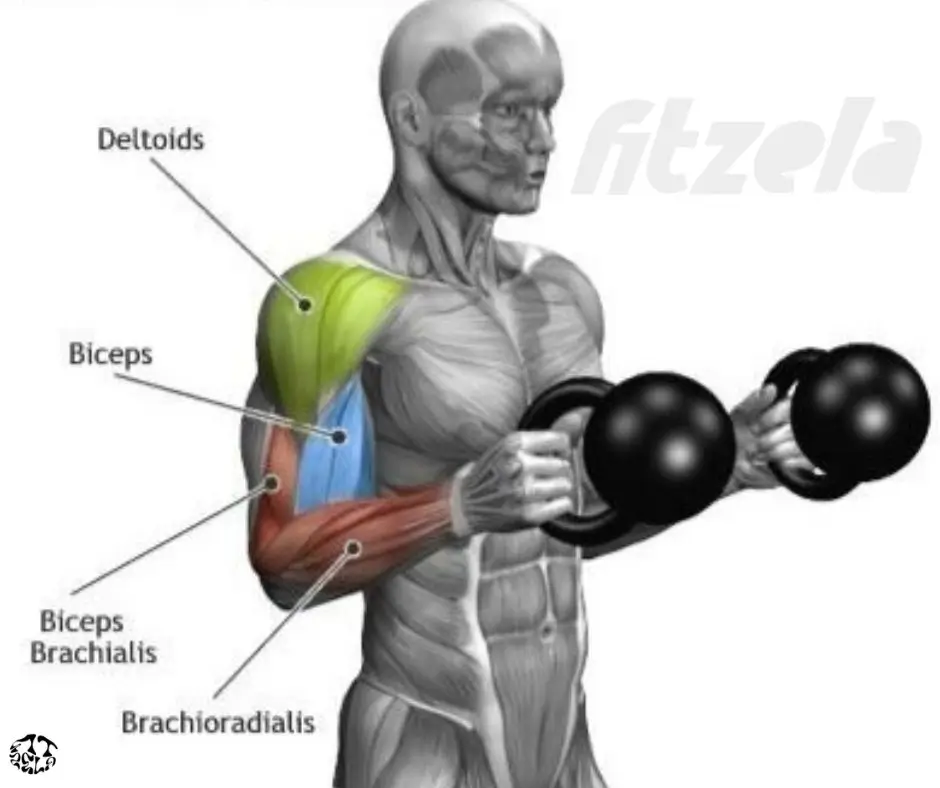
Targets: Brachialis, forearms
- Hold KB by horns, thumbs up.
- Curl elbows forward, keep wrists neutral.
- Lower with control.
Key cues: Keep elbows fixed; imagine driving elbow into ceiling on lift.
Kettlebell Overhead Triceps Extension
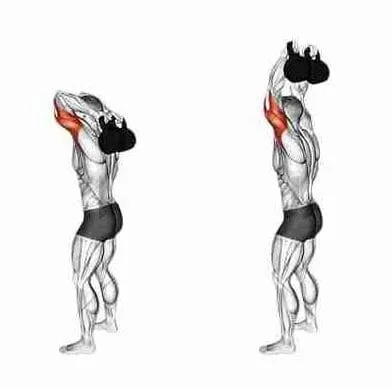
Targets: Triceps long head
- Hold KB by horns behind head, elbows pointing forward.
- Extend arms overhead, locking elbows.
- Lower behind head with elbows stable.
Cues: Tuck ribs; avoid lower back arch.
Common Errors: Elbows splaying—keep tight; hyperextending spine—brace core.
Kettlebell Skullcrusher (Lying Triceps Extension)
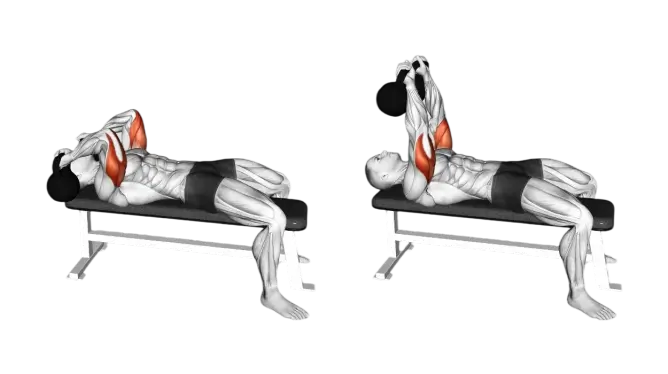
Targets: Triceps
- Lie on back, hold KB with both hands above chest.
- Lower weight toward forehead by bending elbows.
- Extend back to start, keeping upper arms vertical.
Safety: Keep KB close—minute shifts in trajectory can cause injury.
Variation: Try single‑arm skullcrushers for unilateral focus.
KB Floor Press (Close-Grip)
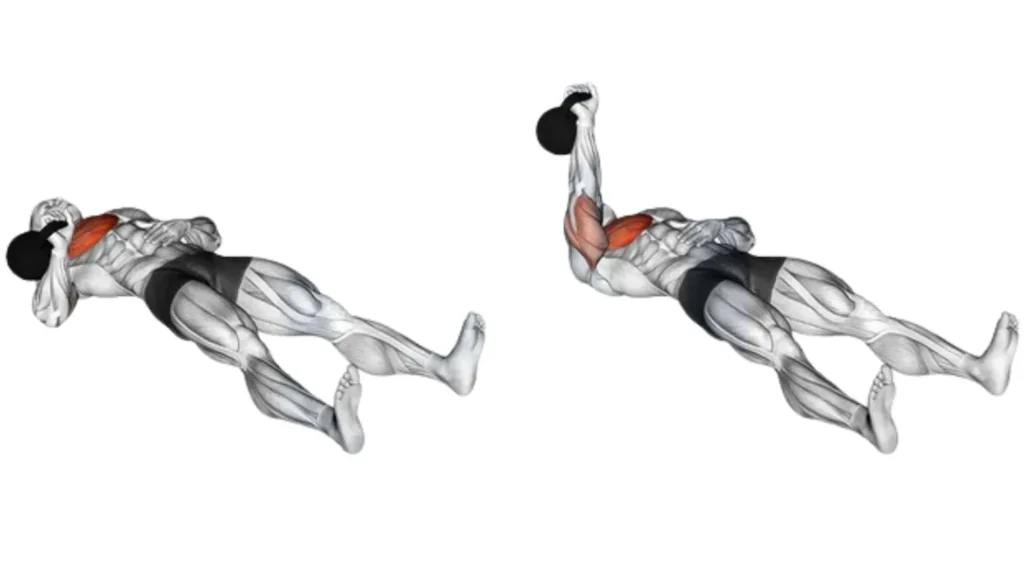
Targets: Triceps, chest, shoulders
- Lie on back, KB in one hand at chest, elbow tucked.
- Press upward, fully extending elbow.
- Lower until elbow touches floor.
Benefits: Built‑in safety—no bench needed.
Cues: Keep wrist and elbow aligned, exhale pushing up.
KB Tate Press
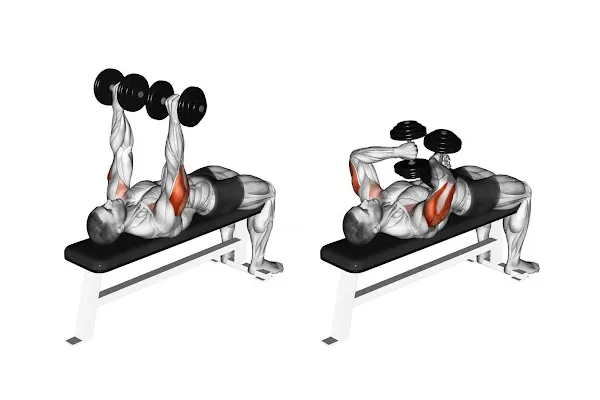
Targets: Triceps medial head
- Lie on bench or floor, KB in each hand, arms vertical.
- Flare elbows out to sides, lower KBs toward armpits.
- Press back by driving elbows in.
Note: Advanced move—start with light weight and master standard extensions first.
Forearm Focus: KB Wrist Curls
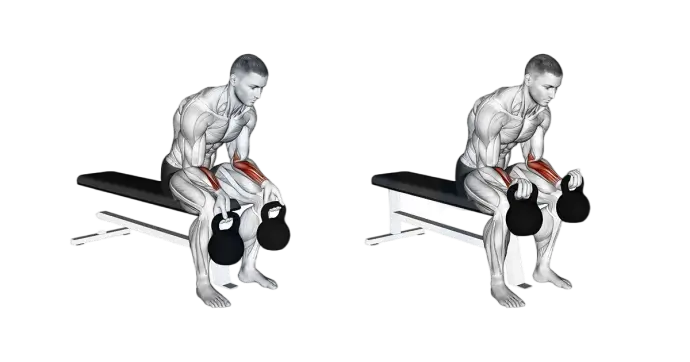
Targets: Wrist flexors/extensors
- Sit, forearm on thigh, KB hanging over knee.
- Curl wrist upward, then lower to full extension.
Cues: Move only the hand, keep forearm still.
Kettlebell Arm Workout Routines
Beginner Kettlebell Arm Finisher
Add after full-body or upper-body session
2–3 rounds, rest 60s
- Close-Grip KB Floor Press ×8–12
- KB Hammer Curls ×10–15/side
Intermediate Kettlebell Arm Focused Workout
Standalone or supplement, 1–2×/week
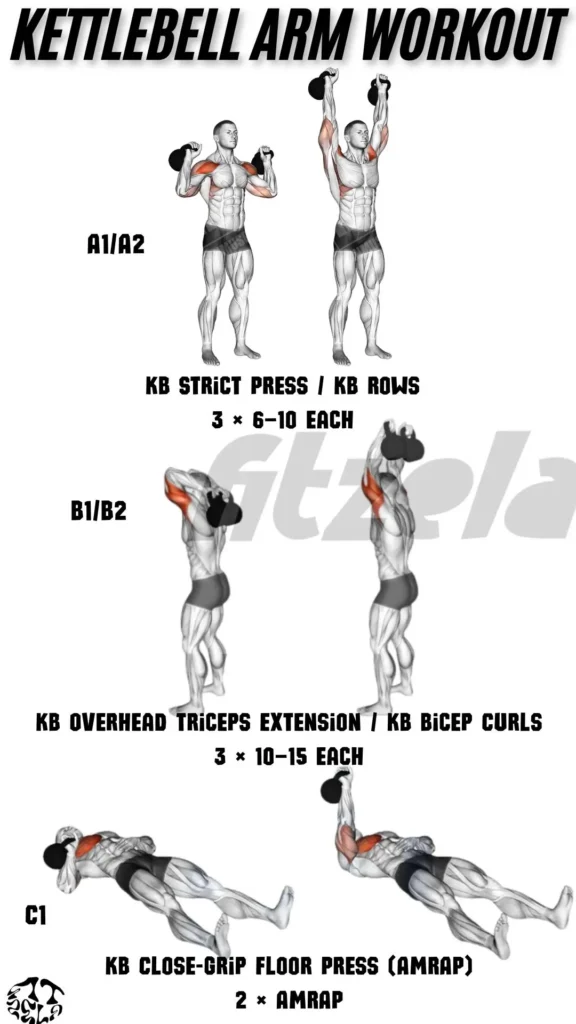
| Superset | Exercise | Sets × Reps |
| A1/A2 | KB Strict Press / KB Rows | 3 × 6–10 each |
| B1/B2 | KB Overhead Triceps Extension / KB Bicep Curls | 3 × 10–15 each |
| C1 | KB Close-Grip Floor Press (AMRAP) | 2 × AMRAP |
KB Arm Supersets (Finishers)
- Skullcrushers + Hammer Curls: 3×10–15 each
- Close-Grip Press + Rows: 3×10–12 each
Programming Kettlebell Arm Work
- Frequency: 1–2×/week as targeted work; compound KB lifts can occur up to 3×/week.
- Placement: Add isolation as finishers after big lifts.
- Progressive Overload: Increase weight, reps, or density (shorter rest) gradually.
- Balance: Never replace bench, row, or press compounds with isolation alone.
Kettlebell Arm Workout Warm-Up & Cool-Down
Dynamic Warm-Up
- Arm Circles & Swings (30s each)
- KB Halos (light) 2×8
- Wrist & Elbow Circles (30s each)
- Light KB Press/Row Rehearsal 2×5
Cool-Down & Stretching
- Triceps Stretch (30s each)
- Biceps Wall Stretch (30s each)
- Forearm Flexor/Extensor Stretch
- Shoulder Cross-Body Stretch
Frequently Asked Questions (FAQ)
Are kettlebells good for building big arms? Yes—especially when you combine compound KB lifts with targeted kettlebell tricep workout moves and progressive overload.
KB vs. Dumbbell for arm workouts? KBs demand more grip and core stabilization; dumbbells allow easier isolation and incremental loading.
Best KB exercise for biceps? Triceps? Biceps: KB curls and hammer variations. Triceps: overhead extensions and close‑grip KB presses.
How heavy for curling vs. extensions? See our weight chart: curls typically start 8–12 kg for men, 4–8 kg for women; extensions slightly heavier.
Wrist pain during KB arm work? Check your grip and form—keep wrists neutral, lower weight if necessary.
Conclusion: Integrate Kettlebells for Stronger Arms
A balanced kettlebell arm workout leverages both big, compound movements and precise isolation drills to deliver sculpted, powerful arms. Embrace the unique grip challenges and core demands of KBs, prioritize safety, and progress methodically.


